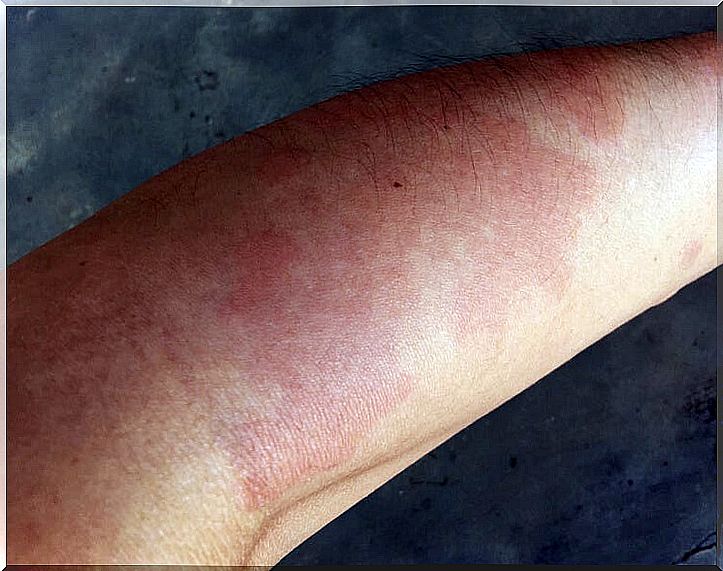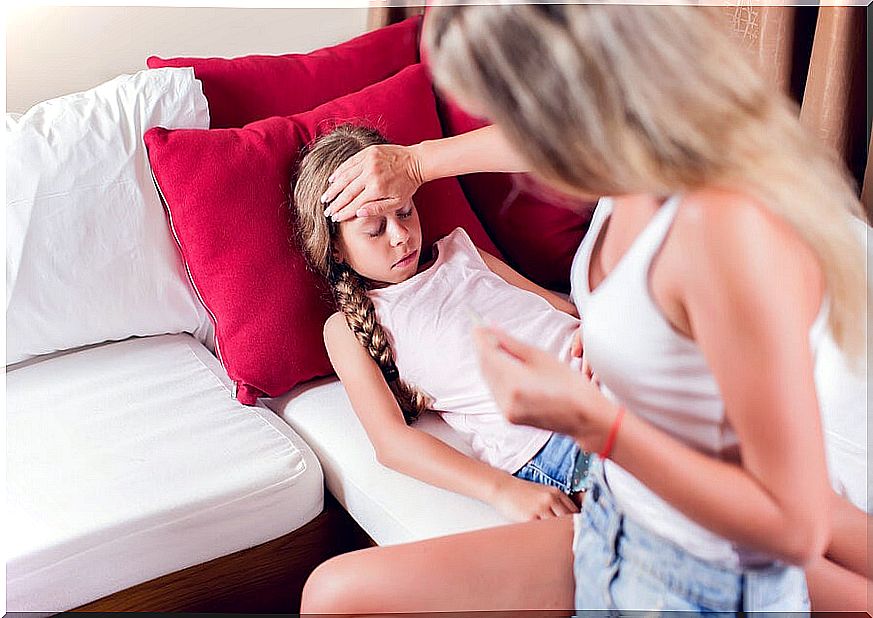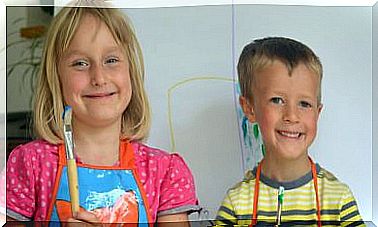Systemic Lupus In Children

Systemic lupus in children is an autoimmune disease that can affect various organs. This pathology presents several multisystemic clinical manifestations and, although several studies have been carried out, its cause is still unknown.
What is systemic lupus in children?
Systemic lupus erythematosus (SLE), as it is also known, is a chronic autoimmune disease that presents various complex clinical manifestations. When this pathology begins, it can present as an acute, fulminant and multi-organ or insidious picture with intermittent symptoms, such as fever, malaise, rash or arthritis.
On the other hand, according to data compiled by the Revista del Hospital de Pediatría Garrahan, in Argentina, a total of 25% of cases of systemic lupus erythematosus (SLE) occurs in childhood, generally between the ages of 11 to 15 years, while only 5% usually present before 5 years of age.
Clinical manifestations
The clinical manifestations can vary from one patient to another and affect different organs. In the case of children, the symptoms are usually more aggressive than in adults, and these appear in different stages, which we will explain below.
General symptoms
In the beginning of the disease, symptoms such as fever, poor general condition or weight loss will appear . Later, other stronger symptoms will begin to appear that can quickly compromise the health of the child.
Skin manifestations of systemic lupus in children
The appearance of this disease is characterized by skin manifestations, which makes it one of the main symptoms to be taken into account. Symptoms include malar erythema, oral ulcers, vasculitic eruption, photosensitivity, alopecia, discoid lesions, and Raynaud’s phenomenon. As we mentioned earlier, the manifestations can be different from one patient to another.
Musculoskeletal manifestations
Arthritis is one of the most common pediatric symptoms. Generally, it presents as symmetric polyarthritis, which is usually very painful and can affect both large and small joints.
Cardiac manifestations
Cardiac manifestations are similar to cases that occur in adults. Among the most common we find pericarditis, myocarditis, valvular disease and coronary disease secondary to coronary arteritis or atherosclerosis.
Neuropsychiatric manifestations of systemic lupus in children
Another manifestation that we can find is the involvement of the central nervous system, but milder symptoms may also occur, such as headache or memory loss.
Lung involvement
Pulmonary manifestations can vary from subclinical alterations to more complicated forms. Among the most common we can find pleurisy and, in less cases, pneumonitis, pneumonia, pneumothorax, diffuse interstitial disease, pulmonary hypertension and pulmonary hemorrhage.
Kidney involvement
In most of the cases that occur, it is usually the most common manifestation and, generally, it facilitates the early diagnosis of the disease. According to research by the Spanish Association of Pediatrics, 80% of patients with kidney disorders will develop disorders during the first year of the disease.

Other manifestations
Among the various manifestations of the disease, we can also find gastrointestinal problems such as peritonitis, esophageal dysfunction and colitis. Eye problems such as exudates, papilledema, retinopathy, among others, may also occur.
Treatment of systemic lupus in children
The treatment of systemic lupus in children and adults is usually complex because the etiology of the disease is not well defined and there are various clinical manifestations, varying from one patient to another, so a uniform therapeutic guide is not established. Depending on each case, these are some of the general recommendations:
- The child must rest and avoid situations that generate stress.
- Exercise helps prevent fatigue and muscle weakness. It should be done after the acute outbreak has been overcome.
- Patients suffering from photosensitivity should not be directly or indirectly exposed to the sun.
- Treatment should be indicated according to the clinical manifestations that the child presents.
Pharmacological treatment depends on the symptoms and manifestations that the child presents, and this should be indicated by a specialist. Some treatments are:
- Non-steroidal anti-inflammatory drugs.
- Antimalarials.
- Corticosteroids
- Immunosuppressants.
- Cyclophosphamide.
- Azathioprine.
- Methotrexate.
Systemic lupus in children is considered a serious disease, so an early diagnosis will allow to study the clinical manifestations in the child and determine the appropriate treatment, according to their condition.










